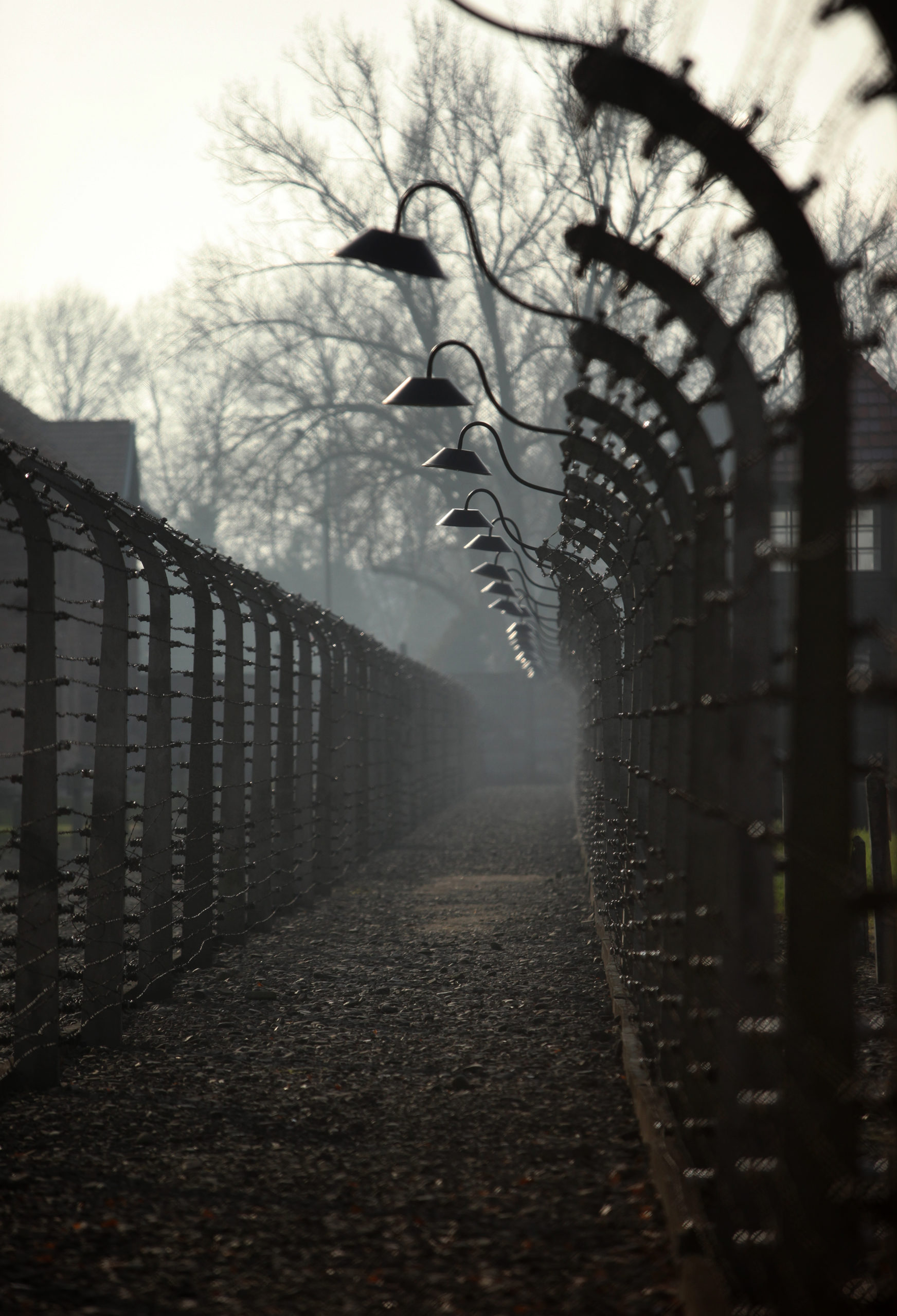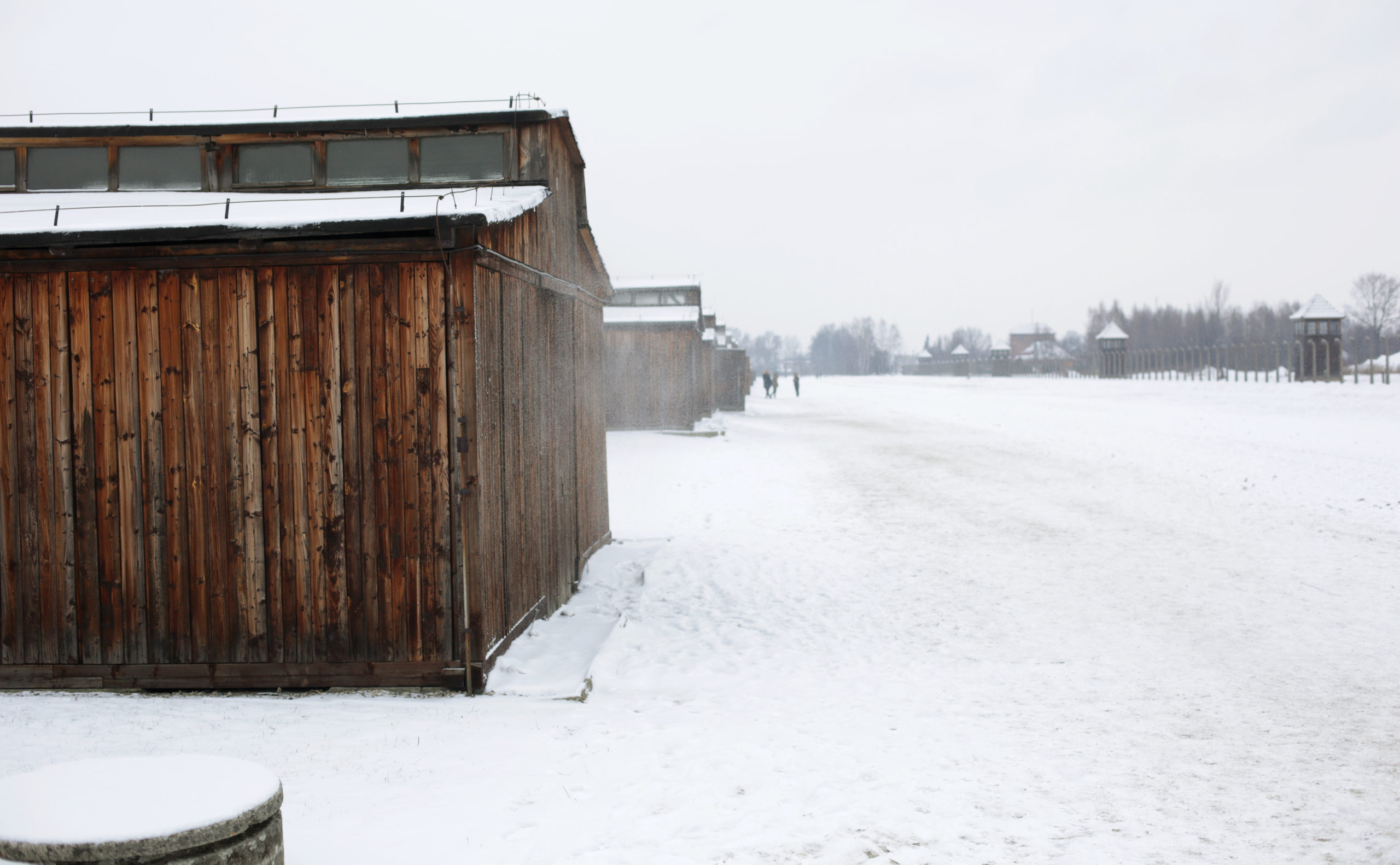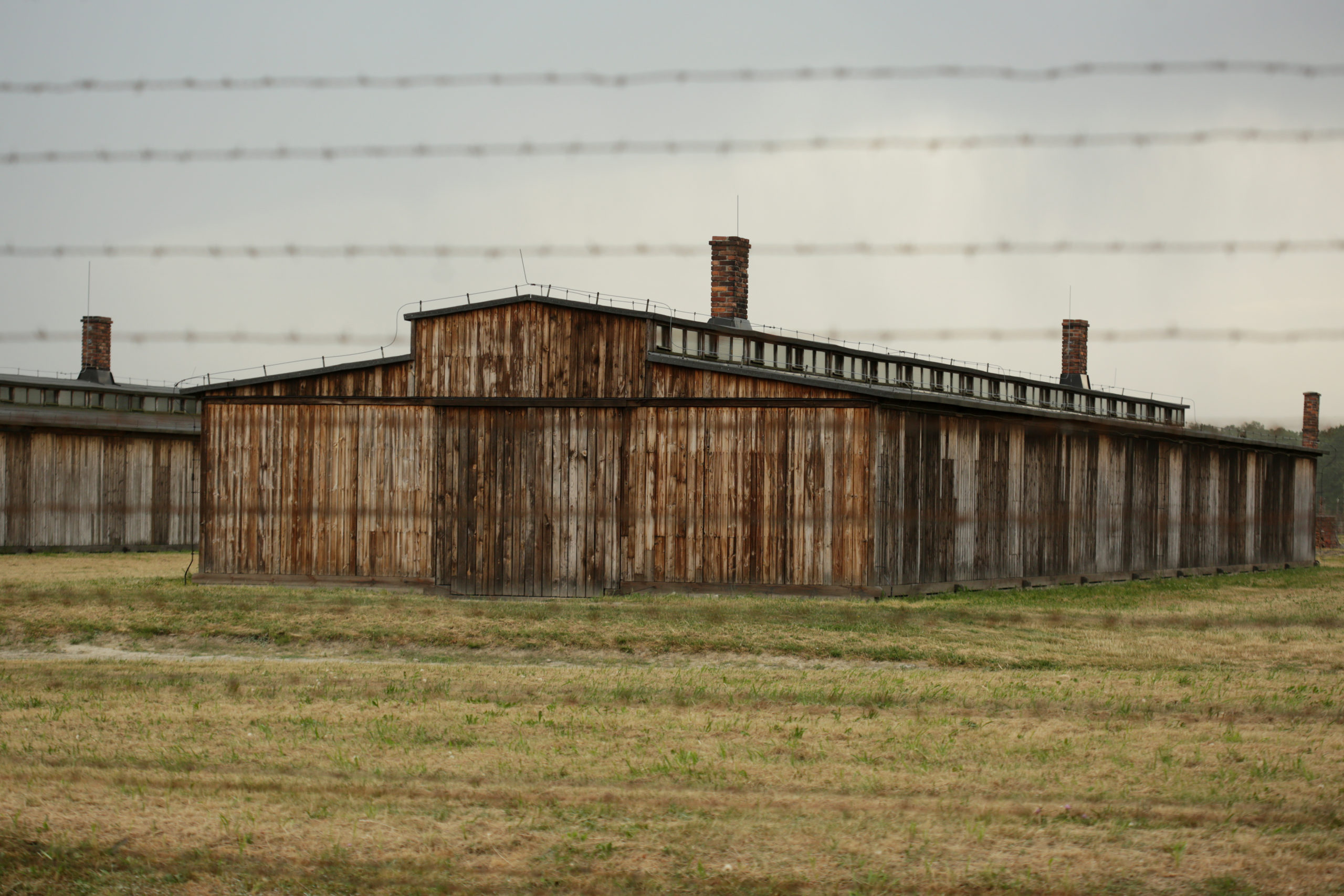Auschwitz II-Birkenau; the Roma family camp visible in the background; Copyright: Auschwitz-Birkenau State Museum.
The last stage of the functioning of the ‘Zigeunerlager’ in the Birkenau Camp
A fragment of new research by Helena Kubica and Piotr Setkiewicz published in Memoria 10/July 2018
Was there a Roma uprising in Birkenau?
A fragment of the account of Polish political prisoner Tadeusz Joachimowski, report writer of section BIIe of Birkenau, served as a basis for the hypothesis on the Roma insurrection in May 1944:
“On May 15, 1944, Bonigut [SS-Unterscharführer Georg Bonigut worked as Rapportführer in the Roma camp] came to me and told me that the situation with the Gypsy camp was bad. It was decided that the Gypsy camp be liquidated. He got the order from the Political Department, transmitted to him by Dr. Mengele, on the liquidation of the Gypsy camp by killing with gas all those Gypsies who were still alive. At the time, there were about 6,500 Gypsies in the camp. Bonigut told me to inform those Gypsies in whom I had complete trust about it. He asked to prevent them “not to let themselves be slaughtered like sheep”. He also said that “Lagersperre” will be the signal to begin the action and that the Gypsies should not leave their barracks. Bonigut assisted some Gypsies himself. I also performed the task entrusted to me in secret.
On the next day, [i.e. May 16] at about 7 p.m., I heard the sound of a gong announcing “Lagersperre”. Cars arrived in front of the Gypsy camp and an escort of about 50-60 SS men armed with machine guns left them. The SS men surrounded the barracks inhabited by the Gypsies. Some SS men entered the habitable barrack shouting “Los, los!” Complete silence fell over the barracks. The Gypsies gathered there – armed with knives, shovels, iron, crowbars and stones – were waiting for the further course of events. They did not leave the barracks. After a short consultation, they went to the “Blockführerstube”, the commandant of the action. After some time I heard a whistle. The SS men surrounding the barracks left their posts, got in the car and drove away. “Lagersperre” was called off. The next day (May 17, 1944), Lagerführer Bonigut came to me and said to me that, “For now, the Gypsies are saved.”
The importance attributed to this account probably resulted from the fact that Tadeusz Joachimowski, who made numerous exhaustive statements and gave evidence after the war, would turn out to be a mostly reliable witness and, due to the function that he served in the camp, he used to be rather well-informed. As at that time, other equally exhaustive accounts of former Roma prisoners were missing, some researchers would tend to treat it as substantially sufficient and, to some extent, incontestable.
It should be mentioned, however, that among quite an important number of accounts included in the Museum archive until the 1970s, such an uprising is never mentioned, nor the attempts of armed resistance of the Roma towards the SS’ intention to liquidate the Zigeunerlager.
The complete article is available as PDF below.
Sinti and Roma in Auschwitz

The last stage of the functioning of the ‘Zigeunerlager’ in the Birkenau Camp
Recent research by historians of the Auschwitz Museum

The Destruction of European Roma in KL Auschwitz
A guidebook for visitors

The genesis and course of the Nazi persecution of Roma and Sinti
Extract from “The Destruction of European Roma in KL Auschwitz: A guidebook for visitors”

Block 11
Extract from “The Destruction of European Roma in KL Auschwitz: A guidebook for visitors”

Escapes
Extract from “The Destruction of European Roma in KL Auschwitz: A guidebook for visitors”

“Zigeunerfamilienlager” (“Gypsy family camp”)
Extract from “The Destruction of European Roma in KL Auschwitz: A guidebook for visitors”

Arrival in the “Zigeunerfamilienlager”
Extract from “The Destruction of European Roma in KL Auschwitz: A guidebook for visitors”

The life of Prisoners
Extract from “The Destruction of European Roma in KL Auschwitz: A guidebook for visitors”

Children
Extract from “The Destruction of European Roma in KL Auschwitz: A guidebook for visitors”

Dr. Mengele and experiments on prisoners
Extract from “The Destruction of European Roma in KL Auschwitz: A guidebook for visitors”










